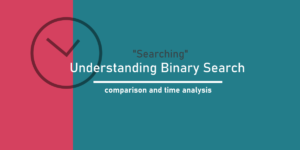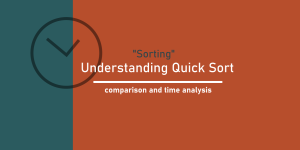We have seen a steep surge in technologies and inventions in this decade. When it comes to a piece of software; be it a consumer or any end product or a service user, behind every successful product or a service that everyone loves to experience, there lives a huge structure of technology that drives the application for its entirety.
Behind such humongous technologies, are their creators; aka the developers and programmers who combine several layers of hardware, software and necessary middle ware into a meaningful and exciting product. Demand for developers and programmers has only started to surge with the apatite for new inventions increasing.
While there are several bands under which the developers work (like the Front-End, Back-End, UI, UX as such), there’s another band of developers who are pretty much capable of delivering a single application or a product as a whole. Meet the emerging trends of developers; aka the “Full Stack Developers”.
“Front End + Back End + Database = Full Stack! (Swag)”
Who are these “Full Stack Developers”?
If you are familiar with a software development, you already know that a software can consist of a front-end layer which we call the User Interface (UI); a back-end layer on top of which all the business logic resides; and a database layer where the data persists.
For large scale applications, teams of developers work at a specific layer for performance or efficiency; gaining exposure to only a single segment of the application as a whole. These developers have exposure or knowledge of things related to only their role of work; such as a front-end or a core layer or a database management.
The Full-Stack developers on the other hand have a complete or a near-perfect idea of all the layers of the application. They are experienced and learned enough to work on any task or issue related to any of the layers leading them to be fully-stacked.
How can someone become a “Full Stack Developer”?
Simple. Learn at least one technology related to each of the three layers mentioned to become one. Its as simple as that. But what is important is the choice of the scripting languages or the programming languages you’re choosing to become a full-stack developer. Since each of these layers are matured enough to have a dedicated set of languages and tools which work on a specific layer for development, testing or deployment if needed.
For one to be called a “Full Stack Developer”, there are certain stacks or a set of technologies from each of these layers to be learned or gained expertise to work. Since each of these technology can have demand for itself; one can safely say that a full-stack developer has the most edge over any others.
Obviously isn’t? imagine one lone warrior who can take on any kind of problem on any sea, that’s a dream come true!
Interesting Stacks for Beginners to Getting Started:
I myself am a .NET Full Stack Developer, specialized in Angular, ASP.NET Core and SQL Server. I’m experienced working in technologies which are used as a set for windows server developments or any .NET based application.
Like me, there are Java guys who work on the Java set of technologies and PHP guys who work on PHP development and so on.
Basically the stack is differentiated by the back-end language or script that we use for developing a solution. And the others in the set are pretty much common and inter-changeable to some extent.
In all stacks, three things remain constant: HTML, CSS, Javascript. They’re like the bare basics to be learned in order to call oneself a “Web Developer” leave behind the “Full Stack”.
HTML is the basic language derived from XML on top of which all the web pages and documents are developed or designed. And unless you use CSS you can’t decorate it with all the styles which make a document presentable. Javascript is the only scripting language a browser can understand and is absolutely necessary to induce functionality onto the document.
“Unless you talk HTML, CSS and Javascript; You are not to be called a Web Developer”
Keeping these behind, there are few popular “stacks”, that developers can pick one and learn to grow. Getting into any of these can provide good career opportunities as well for them:
- Dotnet: JavaScript – Windows – SQL Server- IIS – ASP.NET (C#, VB)
- Java: JavaScript – Any Environment – Oracle – Apache – Java
- LAMP: JavaScript – Linux – Apache – MySQL – PHP
- MEAN: JavaScript – MongoDB – Express – AngularJS – Node.js
- Ruby on Rails: JavaScript – Ruby – SQLite – PHP
In addition to these stacks, we can have add-ons on the Front-End development which result in single page applications (SPA) which have been an emerging trend for web application development. These technologies are frameworks written on top of JavaScript which provide awesome features and functionalities, which are otherwise hard to develop on native JavaScript alone.
Front End Javascript add-ons / Frameworks – Angular(1+), VueJS, ReactJS to name some of the most popular among the section.
Then we have the Styling Frameworks which provide styling and web layout solutions. These are most popular among web solutions which adopt the responsive web design, meaning which are user friendly at all device screens (such as Desktop, Tablet or Mobile) and such.
CSS Frameworks – Bootstrap, Ionic, Material to name some of the most popular among the section.
When one makes oneself familiar to these technologies apart from the above said stacks, one can expect an exceptional demand and growth since these have been some of the most recently emerging tech stacks that market has been anticipating high demand in the coming decade. And then we have another emerging stack known as the Cross-Platform Mobile Development, which we shall talk some other time.




